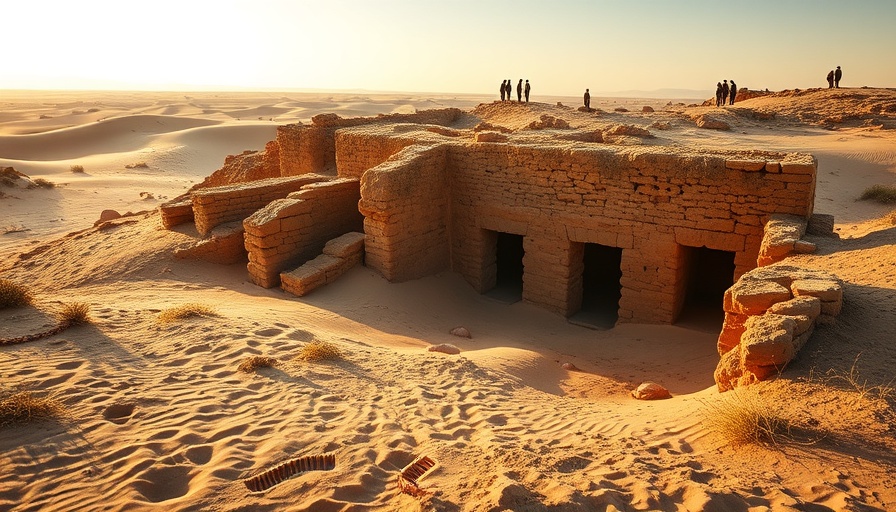
A New Chapter in Egypt's Military History
In a groundbreaking find, archaeologists have unveiled a large military fortress in North Sinai that dates back to Egypt's New Kingdom era. This impressive structure, discovered near Tell El-Kharouba, is one of the most expansive military fortifications ever uncovered along the ancient Horus Military Road, which once protected vital trade routes and secured Egypt from external threats.
A Fortress of Strategic Importance
The New Kingdom period (circa 1550–1070 BCE) saw the construction of a fortified network aimed at defending Egypt's eastern borders, particularly against incursions from neighboring regions. The newly unearthed fortress spans approximately 8,000 square meters, making it about three times the size of a previously discovered structure from the 1980s at the same site. With its formidable walls, including a southern wall measuring 105 meters long and 2.5 meters thick, this fortress stood as a key military stronghold, directly contributing to Egypt's security and trade.
Architectural Marvel of Ancient Engineering
Famed for their engineering prowess, the ancient Egyptians designed this military fortress with multiple defensive features. Among its impressive components are eleven defensive towers and distinct architectural sections that indicate its adaptability to the harsh desert environment. Notably, the fortress included a 75-meter-long zigzag wall that partitioned living quarters for soldiers, showcasing both functionality and strategic design in ancient architecture.
A Rich Trove of Artifacts
Excavations have yielded remarkable artifacts, including pottery fragments dating back to the early 18th Dynasty and foundation deposits that hint at the fortress's long history of renovations and repairs. Intriguingly, a pottery handle stamped with the name of King Thutmose I indicates the far-reaching influence of the New Kingdom's rulers. This discovery also included evidence of everyday life at the fortress, such as a large bread oven alongside remnants of hardened dough, illustrating the soldiers' daily activities and living conditions.
Why This Discovery Matters
This colossal fortress not only enhances our understanding of Egypt's military history but also spotlights Sinai's longstanding role in the nation's defense strategy. The findings amplify our appreciation of the complexity and organization of Pharaonic Egypt – a civilization famous for its majestic temples and tombs, now revealed to also possess formidable military capabilities.
Future Implications for Archaeological Study
The ongoing excavations are expected to provide further insights into the fortress's design and function. Archaeologists speculate that remains of an ancient military port may lie nearby, poised to deepen our knowledge of ancient military logistics and social organization in one of history's most influential civilizations.
Conclusion: A Continuation of Egypt's Rich Narrative
The revelation of this military fortress is a compelling reminder of the importance of archaeological exploration in uncovering the past. For those passionate about history, this find offers a chance to connect with the rich tapestry of human civilization while highlighting the enduring legacy of ancient Egypt. Stay informed about upcoming excavations and continue to explore the fascinating stories that emerge from our past.
Join the conversation and share your thoughts on this extraordinary discovery! What insights do you think we will gain as excavations continue?
 Add Row
Add Row  Add
Add 




Write A Comment